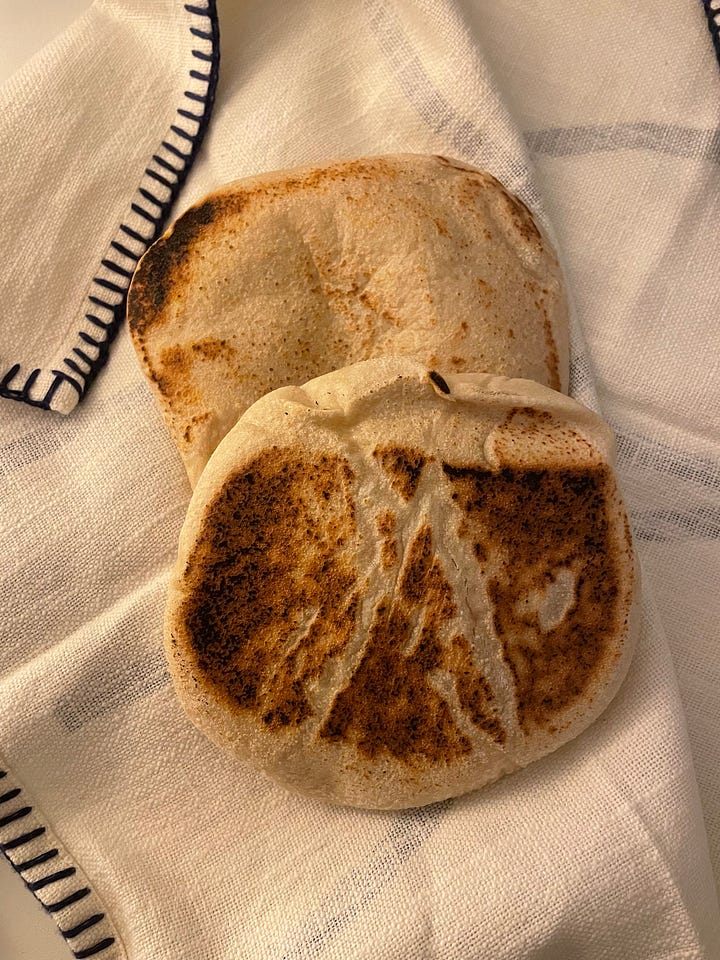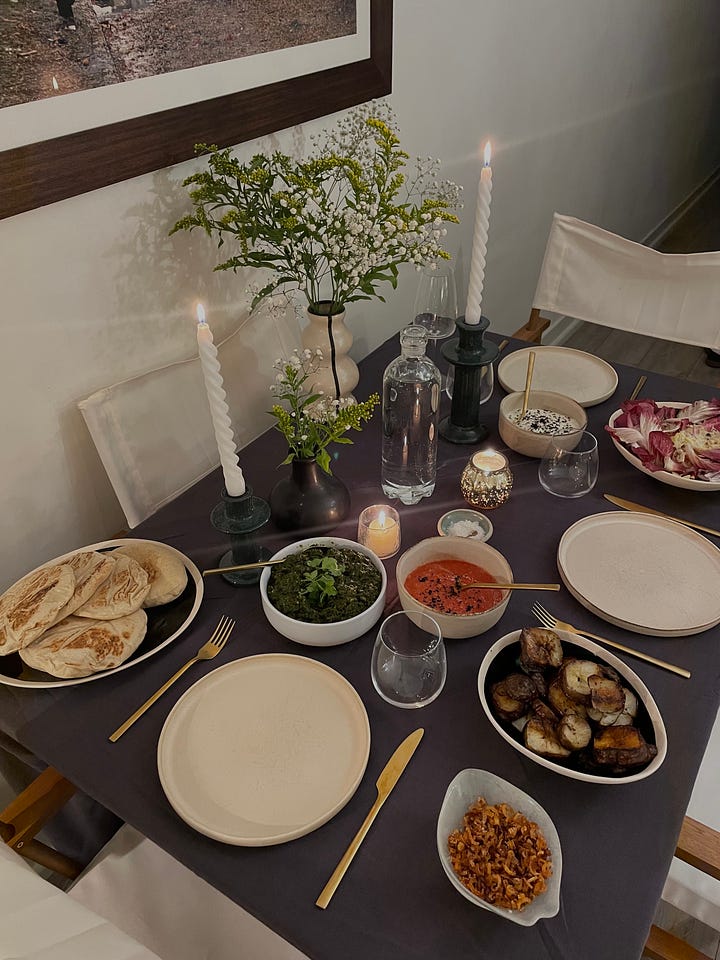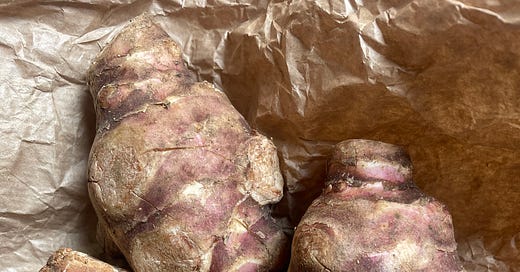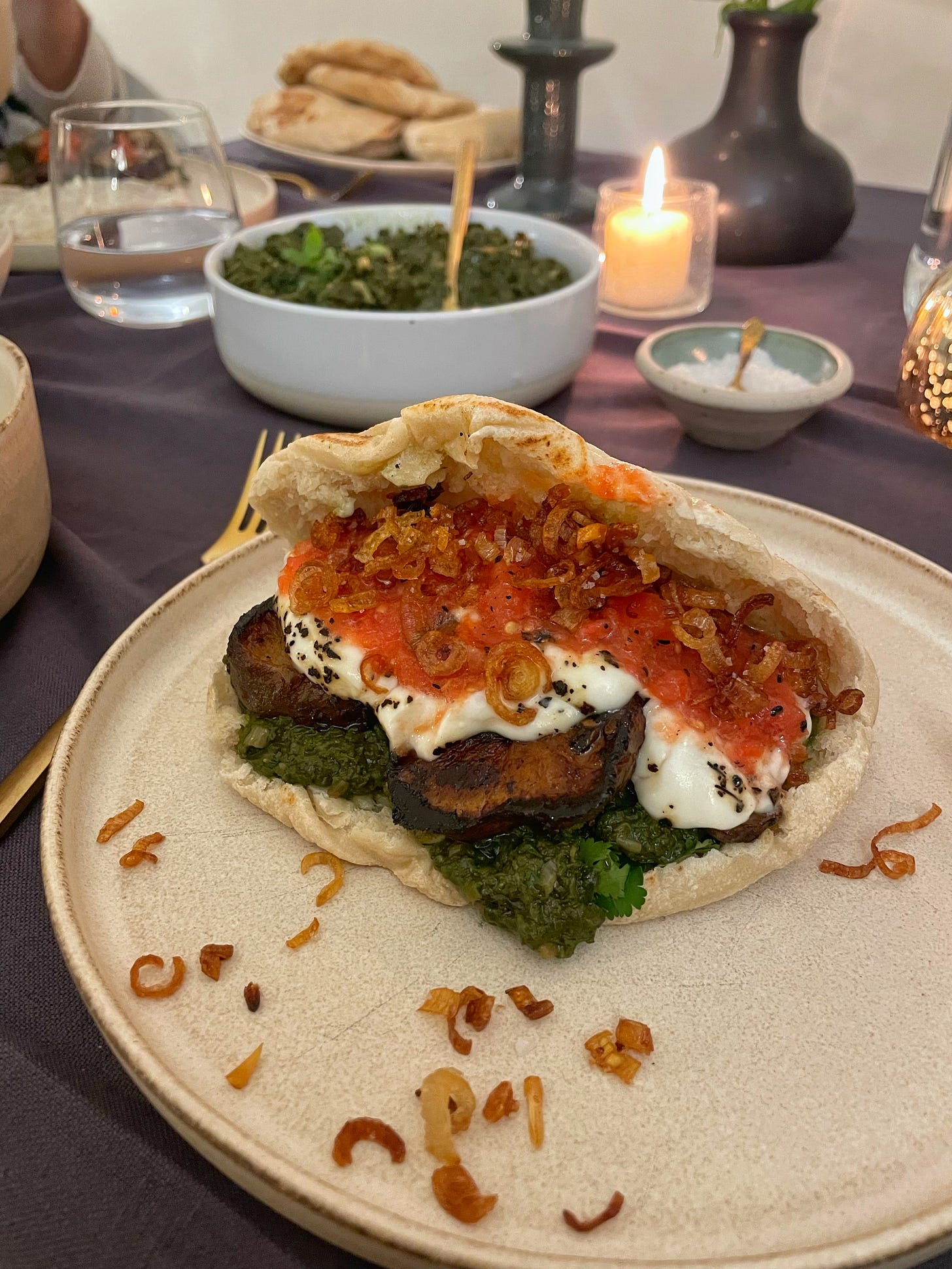This week I bring to you the most confusingly-named root to grace the winter vegetable patch. Neither from the Levant, nor a member of the artichoke family, this unassuming tuber in fact hails from central North America, and is a species of sunflower. It is from the Italian word for sunflower - girasole - that the misleading name supposedly originates.
Jerusalem artichokes are one of those gnarly-looking root vegetables that until relatively recently have passed under the radar for me. With their knobbly, grubby-coloured skin and unimpressive size, they are easy to overlook in favour of smoother or more generously-proportioned alternatives, such as potatoes, parsnips and celeriac. But where they differ from a fiddly ginger root, for example, is in their distinct un-fiddlyness. You do not need to peel them! In fact, you do not need to do much to them at all to make a mighty fine meal. Left to slowly roast and soften in their own juices, their sweet nuttiness really comes to the fore. There’s something oddly comforting about their earthy flavour; in some ways like a poor man’s truffle, they taste as if they’ve just been pulled from the soil.
** UPDATE ** This is not my finest anecdote, but I feel compelled to share it. I’ve just been informed that I was served Jerusalem artichoke as a child (roasted in the AGA with a delicious chicken by my mother, since you asked), and refused to eat it. 🫣
Personally, I feel that I am just at the beginning of my Jerusalem artichoke journey. Experimentation so far has revolved mainly around roasting, substituting them – cubed, generously oiled, salted and tossed in za’atar – for more ubiquitous Sunday lunch sides. However, future me plans to purée them, fry them and even serve them raw, such is their versatility as a vegetable. I love the idea of a velvety, Jerusalem artichoke purée, topped with toasted hazelnuts and roasted celeriac and served with a bitter endive salad. Or caramelised hispi cabbage with Jerusalem artichoke crisps and garlic. Or just roasting them till jammy and serving on a bed of parmesany polenta with a tangy salsa verde. If any of these ideas sound any good to you, let me know, and I’ll pass on a recipe once tried and tested. 🤪
For now, I give you a recipe that I am quite proud of, though I’ll have to admit that it is heavily influenced by the delicious celeriac shawarma at ROVI, which refuses to budge from the menu there (with good reason). I also can’t profess to be a master of baked goods, so the pita recipe comes from the brilliant Bengingi. I cannot emphasise enough how perfect his pitta was, and I will be remaking it on repeat. I’ll also warn you that this recipe is uncharacteristically fussy for me, as the pita takes a bit of patience, and the fermented tomato chilli sauce must be prepared a few days in advance. But boy oh boy is it worth it. I promise.


(If you want to cut corners, buy your pita from a shop, but make sure it is of the fresh, fluffy variety!)
Jerusalem artichoke shawarma
with spinach bkeila and fermented tomato sauce
Serves 4
for the fermented tomato chilli sauce
(NB this makes lots, and trust me you want it)
1kg tomatoes - 200g whole, 800g roughly chopped
20g flaky sea salt (2% of volume of tomatoes)
ginger, thumb sized
4 tbsp of live cider vinegar
2 tbsp honey
1 garlic clove
2 red chillies
1 large shallot, finely chopped
for the pita (if being adventurous and making your own)
500g plain flour
300g lukewarm water
10g dry yeast
25g caster sugar
10g salt
for the roasted Jerusalem artichoke
600g Jerusalem artichoke, scrubbed
3 tbsp extra virgin olive oil
2 pinches salt
2 pinches za’atar
for the spinach bkeila
75g coriander
500g baby spinach
120ml olive oil, plus extra to serve
3 shallots, finely diced
4 garlic cloves, finely diced
2 tsp chilli flakes
1 1/2 tsp cumin
1 tsp ground coriander
1 tsp cinnamon
1 lemon, juiced
for the yoghurt sauce
200g greek style yoghurt
1 lemon, juiced,
1 tbsp olive oil
pinch of salt
to serve
crispy fried onions
coriander
Allow between 2-7 days fermentation for the tomato chilli sauce. I was impatient and used mine after 2, and it was already delicious. Disinfect a Kilner jar and dry thoroughly. Make sure your hands and utensils are clean too! In a food processor, blend together all the ingredients (except 800g tomatoes and the chopped shallot) until a paste is formed. Add the remaining chopped tomatoes and shallot, pack down well (I used a ziplock bag full of water to weigh down mine) and seal. You’ll need to ‘burp’ this once a day whilst fermenting, to prevent too much pressure from building up inside. When you’re ready to use, transfer to a food processor and blend into a coarse sauce - you want to keep some bits for texture.
On the day of feasting, get cracking with the pita first. Follow this genius recipe by Bengingi, and success is guaranteed.
Whilst the pita is resting and rising, turn to the Jerusalem artichoke. You want it to all be similarly sized for cooking, so chop where necessary to achieve a consistent size. In a baking tray, mix together the Jerusalem artichoke, olive oil, salt and za’atar, using your hands to really rub in all the flavours. Wrap with tin foil and roast at 180 degrees for 1.5-2 hours, checking every now and again for softness. They should be juicy and almost jammy when they’re done. Leave to cool before cutting into bite-size pieces.
For the spinach bkeila, finely chop the coriander and spinach. Put half the oil in a large, heavy-based pan on medium heat. Fry the shallots gently until soft and golden. Add the garlic, chilli flakes and spices and cook for a further five minutes. Turn the heat down slightly and add the chopped leaf mix, followed by the rest of the oil. Cover and leave to steam for 20 minutes, stirring every now and then to avoid it catching on the bottom of the pan.
If either the spinach bkeila or the Jerusalem artichoke are finished before the pita has done its final proofing, set aside and reheat before serving. The last thing you want to be doing before serving is baking your pita, so that they’re soft and steaming when you eat.
To serve, cut open the pita and stuff with the bkeila, followed by the Jerusalem artichoke, yoghurt sauce and fermented tomato. Garnish with crispy shallots and coriander and EAT! (If you’ve made it this far, bravo.)
Thank you so much for reading! If you liked the recipe (or the ramblings) I’d love to hear your feedback 💛 and please do share the love using the link below.





